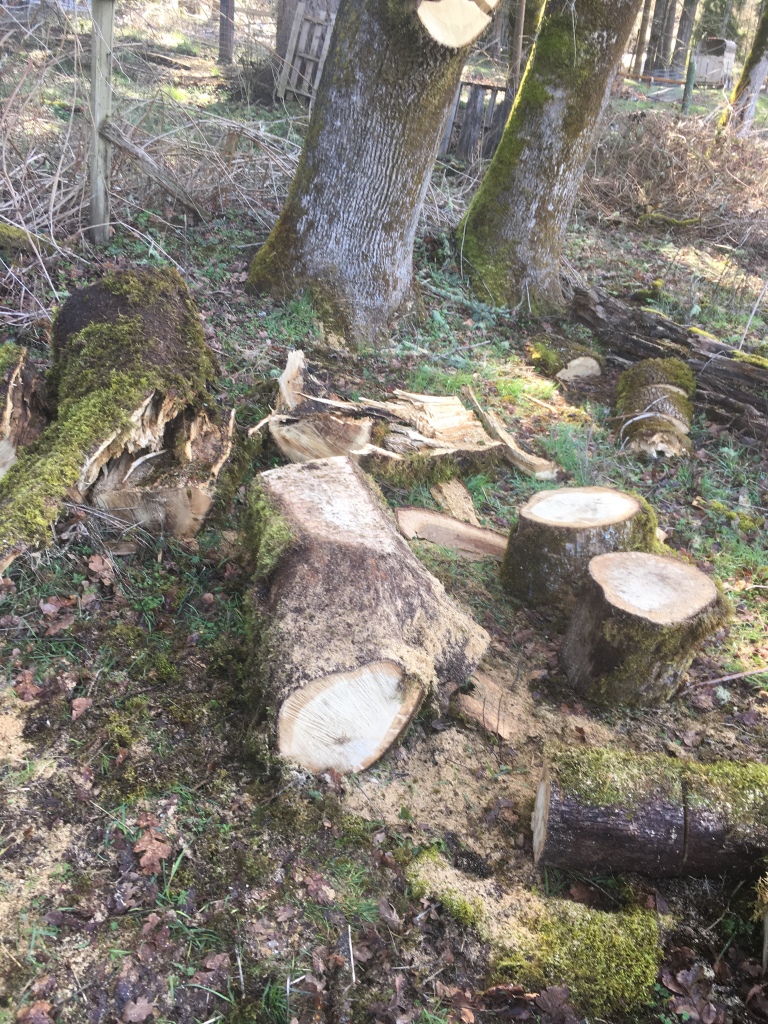
I have finally found a way to make usable amounts of beeswax, which is great because it helps use up all the free time I have between cleaning up the storm damage, mowing, animal care, raising children and a full-time job. What on earth would I have done with myself otherwise? After small scale processing of honey from warre hives one is left with a mash that is made up of wax, propylis, bee parts, residule honey and fibers. Turning that mess into beeswax on a small scale has proven challenging, and messy. The internet has been less than helpful on this matter and every recipe I have has ended in, if not disaster, then disappointment.
The first step of course is to get the honey out. Here on the hillside that involves taking the honey comb and mashing it into a paste and then setting it in a 5 gallon food bucket with holes drilled into set into another bucket without the holes. Experience has shown that the best method is one box per bucket, will yield about 2 gallons of honey and five pounds of “mash”. After a disappointing first effort I set aside all the mash until I figured out a solution. After a year and some they had started to pile up so I went to work on step two.
The second step is to get the wax separated from the fiber that the bees use to make the comb form. The two are designed to stick together so this has proved challenging as they do their jobs well. Using the property of wax as an oil I essentially turned a large (20 quart) pot into a french press with false bottom from a canning pot (do not use your canning pot, everything thing beeswax touches gets covered in wax spatter) and some screen material and heated it to 170 degrees and pushed the remaining solids down and let the beeswax float to the top. The resulting material is better but still not great:

Which is an improvement, but not really candle or soap material. This is where I was stuck for awhile until I was perusing the shelves at… Walmart of all places. when I came across the aluminum cooking pans. Punching some small holes in one pan and putting the wax in it I set it in the oven on warm and found other ways to amuse myself for a few hours, like turning a fallen tree limb into a bench in the pasture:

and let the wax drip through the holes into mini loaf pans. A word of caution: beeswax melts at 145 degrees, discolors and 185 and has a flash point of 400, which is lower than the temperature of the heating element in your stove. So if you do this I highly recommend a steel drip pan under the wax so you don’t burn down your house. Some people use a slow cooker for this reason, but our slow cooker is to essential to risk getting covered in wax.
The resulting loaf pans will be 99.9% wax and the schmutz being polar will tend to settle with the residual water and that will be on the bottom of the block and is easily washed off with a little cold water. So far two large gallon bags of made 2 lbs of wax, or about $15 worth. and consumed a better part of a weekend between other tasks, and made a complete wreck of the kitchen. Which leads to the question: why bother? I could easily make more in half an hour of work and buy beeswax at Glory Bee, but I don’t. The only answer I can offer is that there is satisfaction in turning something not usable by me into something of value whether it is beeswax or just a nice place to sit and have a cup of coffee. It is worth taking the time to go through the steps required by the process.
In our larger wold there are many dilemmas, and like the mash they have no easy one step fix. But there are solutions, though they may well be long and slow, take time effort and ingenuity to resolve the labor is worth the effort and maybe even essential to the process. I do not believe that a candle made of wax will actually burn brighter but it will warm my heart to know it is made from my hands. A community rebuilt from the work of our efforts will perhaps burn brighter in our hearts as well.